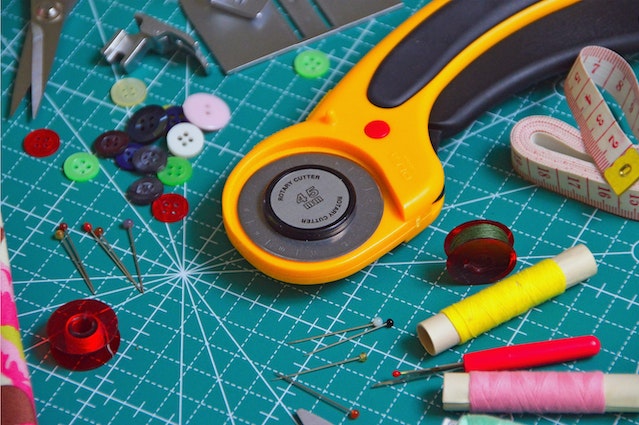Introduction
When it comes to working with fabric, precision is key. Whether you’re a professional seamstress, a DIY enthusiast, or a crafting aficionado, having the right tools can make all the difference in your projects. Fabric cutters are one such essential tool that can streamline your cutting process, save you time, and ensure precise results. In this blog, we’ll explore the world of fabric cutters, discussing their types, benefits, and how to choose the perfect one for your needs.
- Types of Fabric Cutters
Fabric cutters come in various types, each designed to cater to different cutting needs. Here are some of the most common types:
1.1. Rotary Cutters:
- Rotary cutters consist of a sharp, circular blade that rotates to cut through fabric.
- They are excellent for straight lines, curves, and intricate patterns.
- Available in different sizes, with larger blades for heavier fabrics and smaller ones for delicate materials.
1.2. Electric Fabric Cutters:
- These fabric cutters are powered by electricity and come with a motorized blade.
- Ideal for large-scale projects and for those with physical limitations.
- Some models can cut through multiple layers of fabric simultaneously.
1.3. Scissors and Shears:
- Traditional fabric scissors and shears are a go-to choice for smaller tasks and finer details.
- They are versatile and come in various shapes and sizes for different cutting needs.
1.4. Die Cutting Machines:
- Die cutters are used in quilting and crafts and can cut fabric with precision using pre-made dies.
- They are often used for repetitive patterns and shapes.
- Benefits of Fabric Cutters
Using fabric cutters provides a range of benefits that can enhance your sewing and crafting experience:
2.1. Precision:
- Fabric cutters ensure accurate cuts, reducing the risk of mistakes and material wastage.
2.2. Time-Saving:
- With the right fabric cutter, you can complete your projects more efficiently, as they cut through fabric quickly.
2.3. Consistency:
- Fabric cutters help maintain consistent cutting throughout a project, resulting in neater finished products.
2.4. Reduced Hand Fatigue:
- Electric fabric cutters and rotary cutters reduce the strain on your hand and wrist, making them suitable for prolonged use.
2.5. Versatility:
- Different fabric cutters are designed for various fabrics and cutting styles, providing versatility in your work.
- Choosing the Right Fabric Cutter
Selecting the perfect fabric cutter for your needs involves considering several factors:
3.1. Project Type:
- Determine the type of projects you frequently work on. Different cutters suit different tasks, so choose accordingly.
3.2. Material:
- Consider the fabric types you use most often. Ensure your chosen cutter can handle them without causing damage.
3.3. Ergonomics:
- If you have hand or wrist issues, opt for an ergonomic design that reduces strain during use.
3.4. Cutting Mechanism:
- Rotary cutters are excellent for curves and intricate shapes, while electric cutters are more efficient for straight lines and large-scale projects.
3.5. Budget:
- Fabric cutters come in various price ranges. Determine your budget and find the best cutter that fits within it.
